Adding an Ouvvi Tenant
To create a new Ouvvi Tenant, start by opening the Deployment Manager. The Deployment Manager is opened from Data Sync, start by opening the Tools menu and select Ouvvi Deployment Manager.

You can then either click onto the New Tenant button in the toolbar or you can open the file menu and select New Tenant.
This will open the Configuration window where you can set all of your configuration settings for your instance: Such as the Tenant Name, Tenant Path and the Site Port you wish to use to browse to your Ouvvi site.
A random IIS Port will be assigned by default when you add a new Tenant. You may wish to change this to something you can remember. If you plan to make Ouvvi available externally from this server be sure to configure SSL/TLS in IIS after you install this instance to keep your instance secure.
Website Configuration
Provide a name for your new Tenant, and if your SQL Server is on another machine you should configure a Windows Service Account that will be the IISAppPool Identity used to authenticate with your SQL Database.
NT AUTHORITY\NETWORK SERVICE is a machine account and can be used when you have a single server set-up. i.e. Ouvvi Website, Service and Database are on the same server.
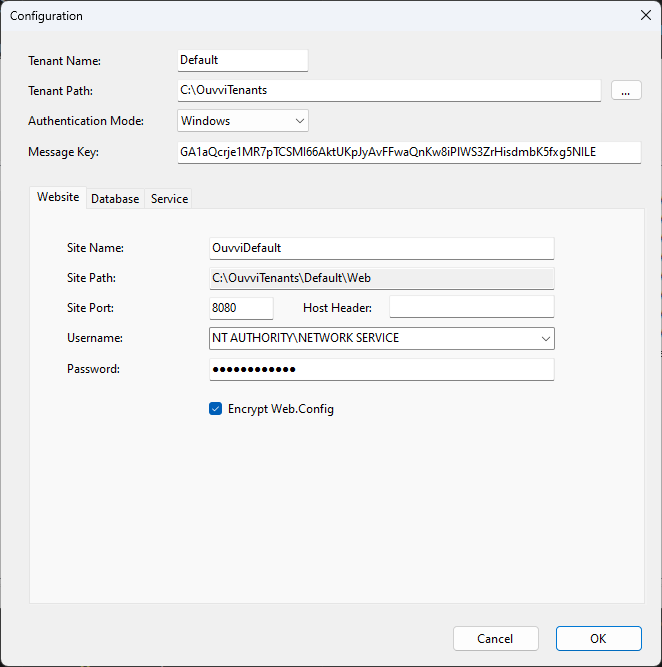
Database Setup
Choose the SQL Server instance that will host your Ouvvi SQL Database.
SQL Authentication is only required when you cannot use Integrated Security and is not recommended unless this is your only option. Therefore, SQL Authentication is usually left blank.
Enter a name for your Ouvvi Database if this database does not exist then a new SQL database on the SQL Server will be created during the install. If the database already exists then this instance will be attached to this database.
The install will add the IISAppPool identity as DBO to the Ouvvi Database only when creating the Database. If you attach to an existing database ensure that the IISAppPool identity has permission to access the SQL Database.
If your SQL Server supports connection encryption set the Encrypt and Trust Server Certificate settings appropriately for your SQL Server connection.
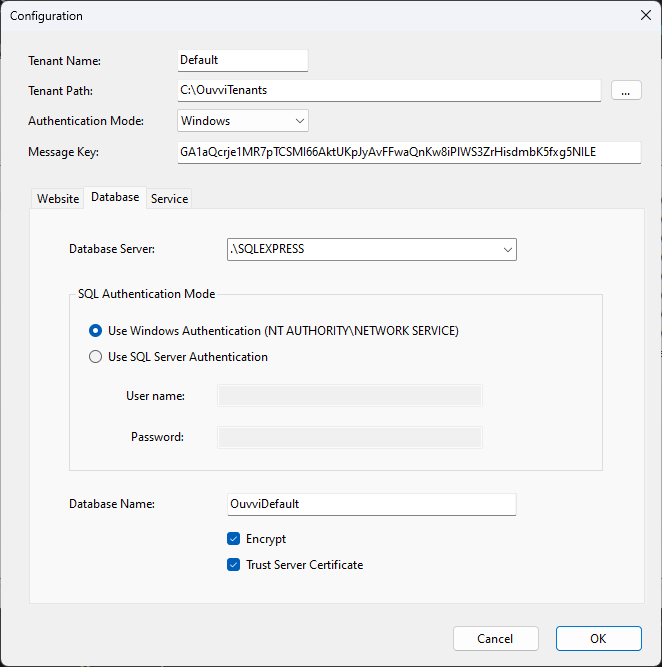
Service Setup
The Ouvvi Windows Service should be configured to run under a network domain account as this account will be used as the security context to run the steps within Ouvvi.
The default account NT AUTHORITY\NETWORK SERVICE is a machine account and can be used to access local machine resources and internet based services with a username and password.
For Local Domain services SQL Servers, SharePoint Servers, FileShares etc a Domain User account must be used.
If you decide to change this from the default you will need to ensure that the service account has Admin+Agent permission set in Ouvvi. For more information on how to set admin and agent permissions please visit the Agents page.
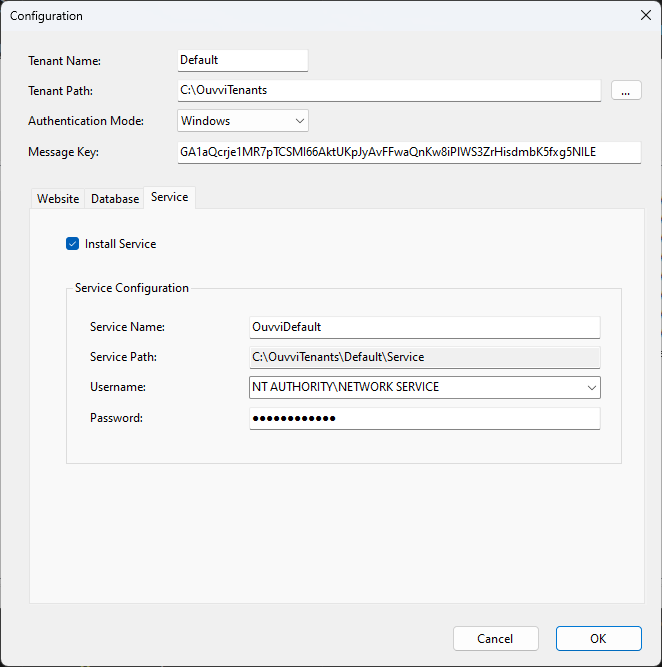
Setup Ouvvi
You now need to install your Tenant. To do this right click onto your tenant and select Install.
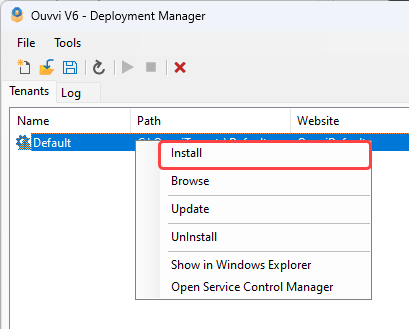
You can check that the instance installed by looking at the icon to the left, if the install was successful there will be a green tick next to the cog rather than the warning triangle.
To complete the setup you need to browse to the site. Do this by right clicking onto the tenant and selecting Browse, which will open the setup page in your default browser.
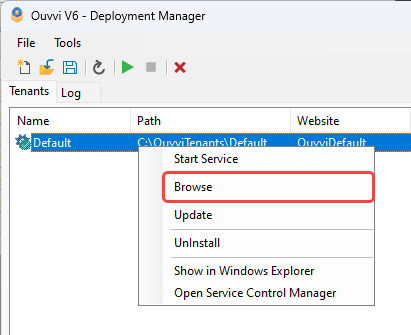
On the setup page you can check that the final settings are correct before setting up your Ouvvi site.
As we selected Windows Authentication in the configuration the only Authentication Mode available is Windows Integrated.
You can also change the regional settings such as the Locale and the Timezone.
You should also check that there are no errors in the Database section. If there are it is usually that the user does not have read-write permissions to create the tables within the Ouvvi database. However as this is using a new SQL Express install this shouldn't be an issue.
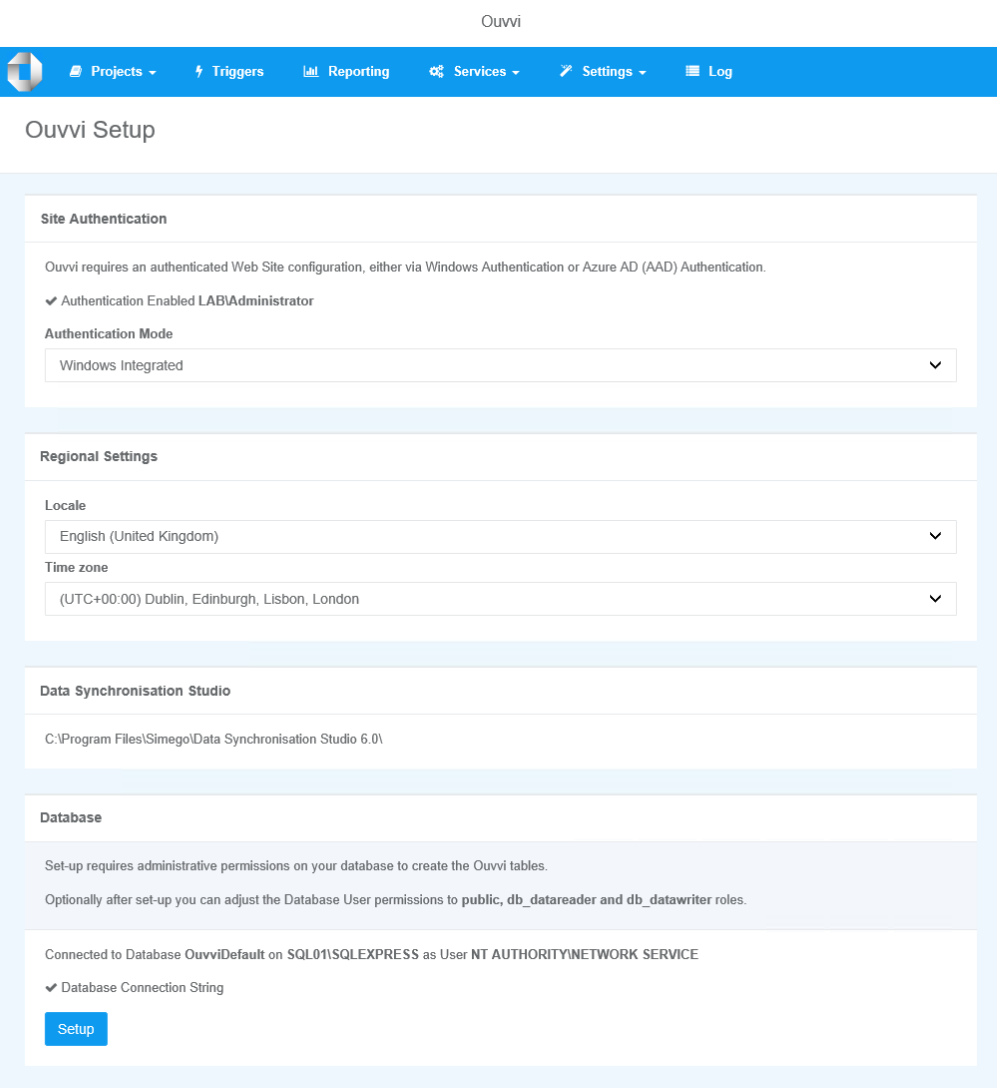
Once you are certain everything is correct click Setup to create the tables and you will then be redirected to the Ouvvi homepage.
License Key
You now need to enter your license key to activate Ouvvi to allow you to run and schedule your projects.
Either click onto the Activate link in the banner at the top or open the Settings Menu and select Register License.
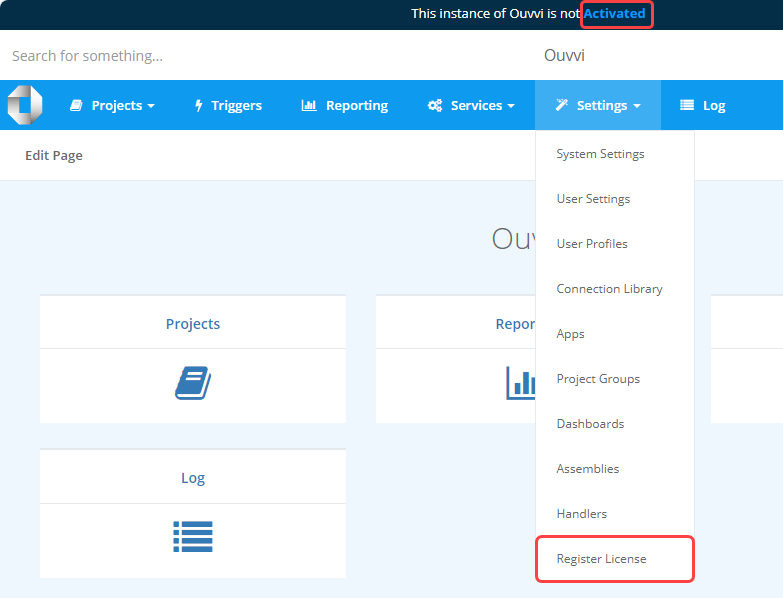
These links will open the license registration page where you can enter your license key into the field. Make sure to click Activate to apply the license.
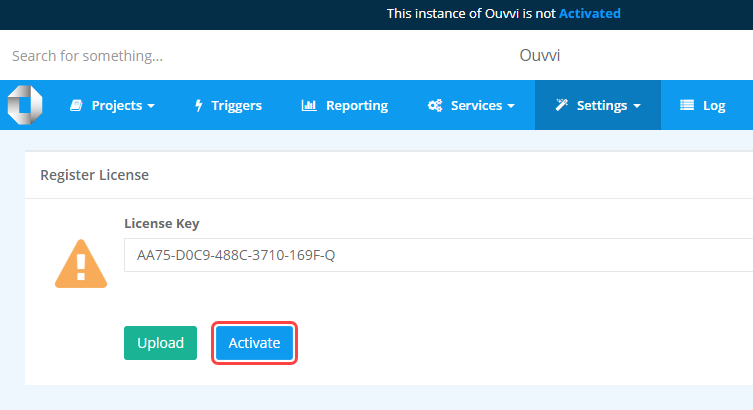
The page will show a green tick to the left and the expiry date to the right if it activated without errors.

Service
You can now go back to the Deployment Manager and start the services. For the first time you start them it is best to right click onto the tenant and select Start Service.
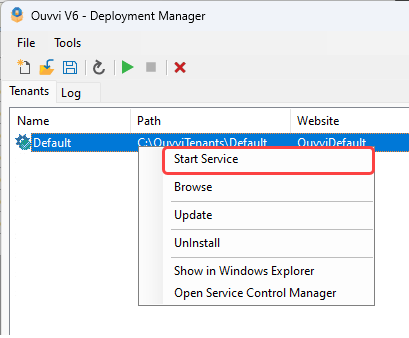
This will open the browser to the Agent Service configuration page to allow you to setup the services. Click onto Setup Services to setup and start the service.

The page will redirect to the services table where you can see green flags which means the services are running.

You can now go on to create your projects and steps as needed. Take a look at our getting started for a guide on how to configure your first project and add the steps.
Save the Configuration
To make sure you can access the tenant you have just created go back to the deployment manager and click Save to keep the tenant in the list. You can either use the Save icon in the toolbar or you can open the File menu and select Save.
If you have closed the deployment manager before saving then you can follow the Import Tenant instructions to import the tenant you have created back into the deployment manager.